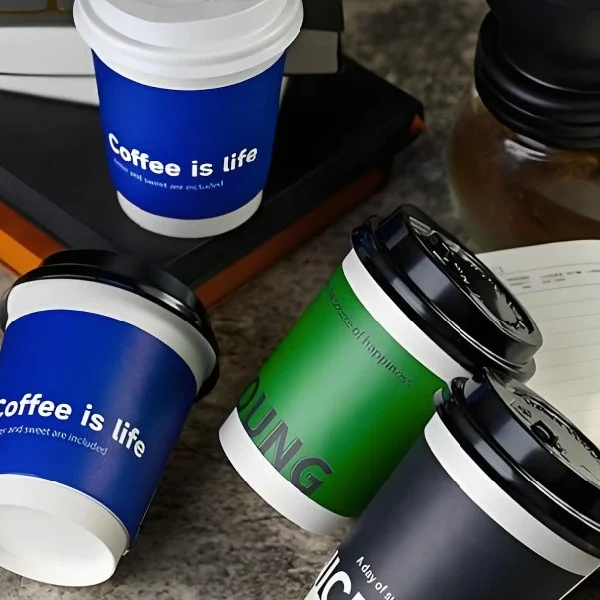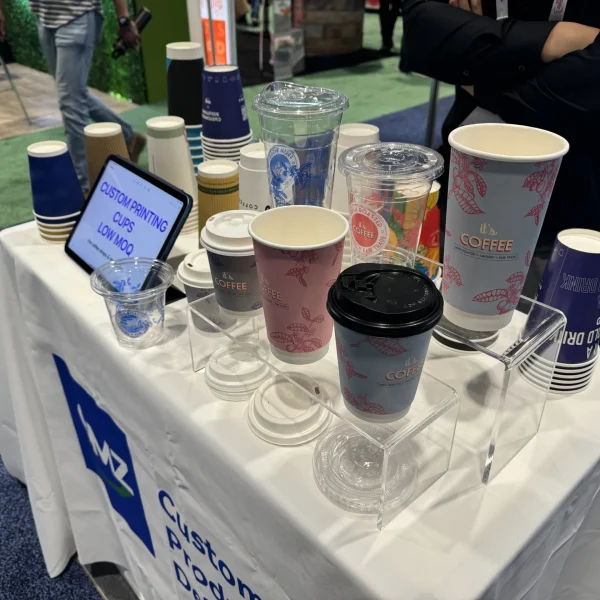Understanding paper cups’ environmental impact and usability is crucial in the debate over paper cups vs. foam cups. This guide explores the differences between these two popular options, helping you make informed choices about which is better for your needs. From their effects on nature to their practicality in everyday use, we will explore various aspects that matter to consumers today.
Key Takeaways
- Paper cups are generally more eco-friendly than foam cups due to their ability to biodegrade and be recycled.
- Foam cups provide better insulation for hot beverages, making them a preferred choice for some users.
- The cost of paper cups can be higher initially, but they may save money in the long run due to their recyclability.
- Health concerns about chemicals in foam cups make paper cups a safer option for hot drinks.
- Consumer preferences are shifting towards sustainable products, increasing the demand for paper cups.
Understanding the Environmental Impact of Paper Cups vs Foam Cups

When it comes to choosing between paper cups and foam cups, many people think that paper cups are better for the environment. However, the environmental impact of both types of cups is more complex than it seems.
Biodegradability and Compostability
- Paper cups can break down naturally in the environment, especially if they are composted.
- Foam cups, made from polystyrene, take much longer to decompose and can remain in landfills for hundreds of years.
- Many paper cups are now designed to be compostable, which means they can turn into nutrient-rich soil when disposed of properly.
Energy Consumption in Production
- Producing paper cups generally requires less energy compared to foam cups.
- The process of making foam cups involves more energy-intensive methods, which can lead to higher carbon emissions.
- Recycling paper cups can further reduce energy use, as it takes less energy to recycle than to create new foam cups from raw materials.
Impact on Wildlife and Ecosystems
- Paper cups, when disposed of properly, have a lower risk of harming wildlife compared to foam cups.
- Foam cups can break into small pieces, which can be ingested by animals, leading to health issues.
- The production of foam cups can also contribute to pollution, affecting local ecosystems.
Usability and Practicality of Paper Cups vs Foam Cups

When choosing between paper cups and foam cups, several factors play a role in their usability and practicality. Both types of cups have their unique advantages and disadvantages.
Insulation and Temperature Retention
- Paper cups often have a double-wall design that helps keep drinks hot without burning your hands.
- Foam cups provide excellent insulation, keeping beverages hot or cold for longer periods.
- Both types can be used for hot and cold drinks, but paper cups may require sleeves for extra protection.
Durability and Strength
- Foam cups are generally more durable and less likely to collapse under pressure.
- Paper cups can become soggy if exposed to liquids for too long, especially if they are not coated properly.
- The strength of each cup can vary based on the quality of materials used in production.
Convenience and Portability
- Paper cups are lightweight and can be easily customized with branding, making them popular for events.
- Foam cups are also lightweight but are often seen as less environmentally friendly.
- Both types are designed for single-use, which adds to their convenience for on-the-go consumption.
The choice between paper and foam cups often depends on the specific needs of the user, including factors like insulation, durability, and convenience.
Cost Analysis: Paper Cups vs Foam Cups

Initial Purchase Costs
When comparing paper cups and foam cups, the initial purchase costs can vary significantly. Generally, paper cups tend to be more expensive than foam cups. Here’s a quick breakdown:
| Type of Cup | Average Cost per 1000 Cups |
|---|---|
| Paper Cups | $80 – $120 |
| Foam Cups | $50 – $80 |
Long-term Financial Implications
While foam cups may have a lower initial cost, there are long-term financial implications to consider:
- Waste Disposal Costs: Foam cups are not biodegradable, leading to higher waste management costs.
- Recycling Fees: Paper cups can often be recycled, potentially reducing disposal fees.
- Consumer Preference: Increasing demand for eco-friendly products may affect sales of foam cups negatively.
Cost-effectiveness in Bulk Purchases
Buying in bulk can lead to significant savings. Here are some points to consider:
- Discounts: Many suppliers offer discounts for bulk orders, which can lower the cost per unit.
- Storage Costs: Consider the space needed to store large quantities of cups.
- Market Trends: The global foam cups market is expected to grow, with a projected size exceeding USD 1332.20 million by 2033, which may influence future pricing strategies.
While foam cups may seem cheaper initially, the overall cost-effectiveness can vary based on disposal methods, consumer preferences, and market trends.
Health and Safety Considerations

Chemical Safety in Hot Beverages
When using paper cups for hot drinks, it’s crucial to ensure they are made with food-safe linings. Some plastic linings can release harmful chemicals when heated. To avoid this, opt for biodegradable or compostable options that are designed for hot beverages.
Potential Allergens and Irritants
Paper cups can sometimes contain allergens or irritants due to the materials used in their production. Here are some common concerns:
- Dyes and Coatings: Some cups may use dyes that can cause allergic reactions.
- Chemical Residues: Residues from manufacturing processes can be present.
- Cross-Contamination: Improper storage can lead to contamination from other products.
Food Safety Standards Compliance
It’s essential for paper cups to meet food safety standards to ensure they are safe for use. Key points include:
- Regulatory Compliance: Cups should comply with local and international food safety regulations.
- Quality Control: Regular testing for contaminants and durability is necessary.
- Proper Storage: Storing cups in clean, dry conditions helps prevent contamination.
Comparative Shelf Life and Storage Requirements

Factors Affecting Shelf Life
The shelf life of paper cups can vary based on several important factors:
- Material Quality: Higher quality materials can lead to a longer shelf life. Premium paper and coatings resist wear and tear better.
- Environmental Conditions: Exposure to moisture, extreme temperatures, and sunlight can damage the cups. Keeping them in moderate conditions helps maintain their quality.
- Manufacturing Processes: Strict quality control during production ensures that the cups are durable and long-lasting.
Optimal Storage Conditions
To keep paper cups in good shape, proper storage is crucial. Here are some tips:
- Store in a cool, dry place away from sunlight.
- Maintain a temperature between 14°C and 24°C.
- Keep humidity levels between 45% and 60%.
What Happens Beyond Shelf Life?
When paper cups exceed their shelf life, they can face several issues:
- Increased Risk of Contamination: Dust and mold can settle on the cups, posing health risks.
- Potential for Discoloration and Odor: The cups may develop yellowing or a musty smell.
- Loss of Structural Integrity: The cups may become brittle and prone to leaks.
Final Thoughts on Paper and Foam Cups
In conclusion, when it comes to choosing between paper and foam cups, it’s important to think about both how they work and their impact on the environment. Paper cups, like those from GMZ, are made from renewable materials and can break down more easily than foam cups, which are often made from plastic and can take a long time to decompose. While foam cups might be cheaper and more durable, they are not as eco-friendly. By picking paper cups, you are making a choice that helps reduce waste and supports a cleaner planet. Remember, the best choice depends on what you need and how you want to care for the environment.
Frequently Asked Questions
Paper cups are made from renewable materials and are often recyclable or compostable. Foam cups are made from plastic and can take a long time to break down in the environment.
Yes, paper cups are generally considered better for the environment because they are biodegradable and can be recycled, while foam cups are not.
Store paper cups in a cool, dry place away from direct sunlight to keep them in good condition.
Yes, brands like GMZ offer eco-friendly paper cups made from sustainable materials, minimizing environmental impact.












